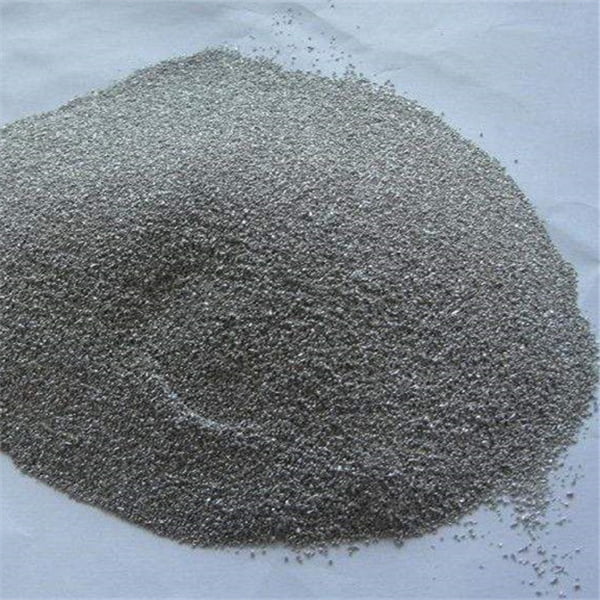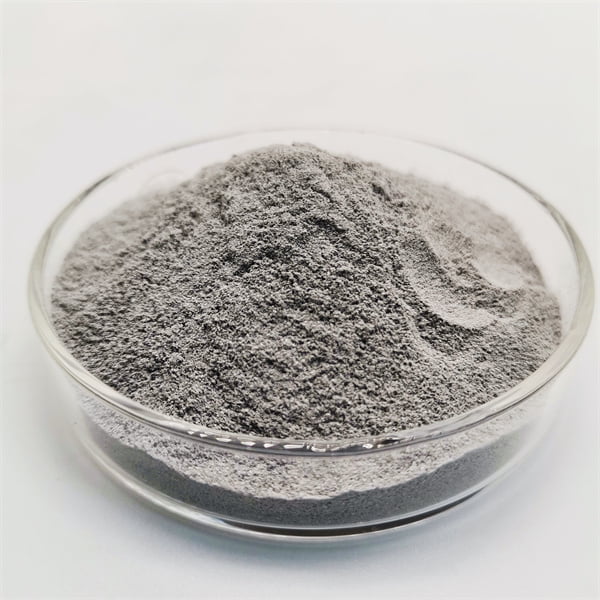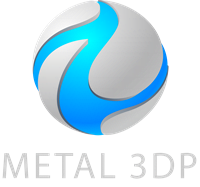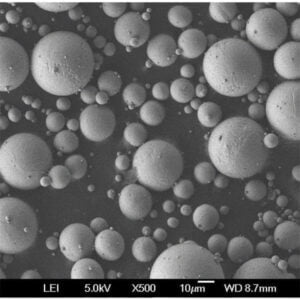Stel je een auto voor die lichter is dan ooit, maar toch superieur sterk en zuiniger. Dit is geen sciencefiction, maar de realiteit van metaalpoedertechnologie in de auto-industrie. Metaalpoeder voor auto's zijn fijngemalen metalen deeltjes die een revolutie veroorzaken in de manier waarop auto's worden ontworpen en geproduceerd.
Deze uitgebreide gids duikt diep in de wereld van metaalpoeder voor automobiel toepassingen. We verkennen de verschillende soorten metaalpoeders, hun eigenschappen en hoe ze worden gebruikt om de volgende generatie auto-onderdelen te maken. We duiken ook in de voordelen en beperkingen van metaalpoeder, vergelijken specifieke modellen en beantwoorden veelgestelde vragen. Dus, zet je schrap en maak je klaar om de fascinerende wereld van metaalpoeder in de auto-industrie te verkennen!
Soorten, samenstelling, eigenschappen en kenmerken van metaalpoeders voor toepassingen in de auto-industrie
Metaalpoeders zijn er in verschillende smaken, elk met unieke eigenschappen die ze ideaal maken voor specifieke toepassingen in de auto-industrie. Hier volgt een overzicht van de meest voorkomende soorten:
| Metaal Poeder Type | Samenstelling | Eigenschappen | Kenmerken |
|---|---|---|---|
| Poeders op basis van ijzer | Voornamelijk ijzer, met legeringselementen zoals nikkel, koper of molybdeen | Hoge sterkte, goede slijtvastheid, uitstekende bewerkbaarheid | Veelzijdig; gebruikt in een groot aantal auto-onderdelen |
| Staalpoeders | IJzer en koolstof, met extra legeringselementen afhankelijk van het gewenste staaltype | Breed scala aan eigenschappen afhankelijk van het specifieke staal; over het algemeen hoge sterkte, goede slijtvastheid en uitstekende vervormbaarheid | Bieden een breder spectrum aan eigenschappen in vergelijking met poeders op ijzerbasis |
| Poeders op basis van aluminium | Voornamelijk aluminium, met legeringselementen zoals silicium, magnesium of koper | Lichtgewicht, goede corrosiebestendigheid, hoge thermische geleidbaarheid | Ideaal voor toepassingen waarbij gewichtsvermindering cruciaal is |
| Poeders op basis van nikkel | Voornamelijk nikkel, met legeringselementen zoals chroom, molybdeen of wolfraam | Uitstekende sterkte bij hoge temperaturen, goede weerstand tegen corrosie | Gebruikt in veeleisende toepassingen zoals motoronderdelen die worden blootgesteld aan hoge temperaturen |

Naast deze basistypes zijn er tal van speciale metaalpoeders:
- Roestvrijstalen poeders: Bieden superieure weerstand tegen corrosie voor onderdelen die worden blootgesteld aan zware omgevingen.
- Koperpoeders: Uitstekende elektrische geleiding, waardoor ze ideaal zijn voor elektrische componenten.
- Titaanpoeders: Hoge sterkte-gewichtsverhouding en uitstekende corrosiebestendigheid, maar meestal duurder.
Bij het kiezen van een metaalpoeder voor een autotoepassing moet je rekening houden met verschillende factoren:
- Gewenste eigenschappen: Sterkte, slijtvastheid, gewicht, corrosiebestendigheid en thermische geleidbaarheid zijn allemaal cruciale factoren.
- Deelcomplexiteit: Sommige metaalpoeders zijn beter geschikt voor ingewikkelde vormen dan andere.
- Kosten: Metaalpoederprijzen variëren afhankelijk van het type en de complexiteit van het poeder.
Toepassingen van metaalpoeder in de autoproductie
Metaalpoeders vinden hun weg naar steeds meer auto-onderdelen. Hier zijn enkele van de meest voorkomende toepassingen:
| Automobielcomponent | Metaalpoeder Type(s) | Voordelen |
|---|---|---|
| Motoronderdelen | IJzer, staal, nikkel | Lichter gewicht verbetert brandstofefficiëntie; hoge sterkte zorgt voor duurzaamheid |
| Transmissie versnellingen | Op ijzerbasis, staal | Hoge sterkte en slijtvastheid voor soepel schakelen |
| Remonderdelen | Op ijzerbasis, staal | Hoge slijtvastheid voor langere levensduur van de remmen |
| Ophangingsonderdelen | Op ijzer gebaseerd, op aluminium gebaseerd | Lichter gewicht vermindert onafgeveerde massa voor betere handling |
| Lichaamsdelen | op basis van aluminium | Lichtgewicht constructie verbetert brandstofefficiëntie |
| Elektrische onderdelen | Koper, ijzerhoudend | Verbeterde geleidbaarheid voor betere elektrische prestaties |
The use of metal powder in automotive manufacturing offers several advantages:
- Gewichtsvermindering: Metal powders can significantly reduce the weight of car parts, leading to improved fuel efficiency and handling.
- Ontwerpflexibiliteit: Metal powder allows for the creation of complex shapes that are difficult or impossible to achieve with traditional manufacturing methods.
- Materiaalefficiëntie: Metal powder processes generate minimal waste, making them an environmentally friendly option.
- High precision: Metal powder parts can be produced with high dimensional accuracy.
- Verbeterde prestaties: Metal powders can provide superior strength, wear resistance, and other performance characteristics compared to traditional materials.
However, metal powder technology also has some limitations:
- Kosten: Metal powder can be more expensive than traditional materials, although the cost is coming down as the technology matures.
- Beperkte onderdeelgrootte: Current technology has limitations on the size of parts that can be manufactured using metal powder.
- Afwerking oppervlak: Metal powder parts may require additional finishing processes to achieve the desired surface quality.
Specific Metal Powder Models for Automotive Applications
With a plethora of metal powder options available, here’s a closer look at ten specific models commonly used in the automotive industry:
- Höganäs Atomized AM 301: This iron-based powder from Höganäs AB is a workhorse material for automotive applications. It boasts excellent compressibility and flowability, making it ideal for complex shapes in high-volume production runs. AM 301 offers good green strength for easy handling and minimal part distortion during sintering. Typical applications include structural components, gears, and engine parts.
- AMPO CP-1: This water-atomized iron powder from AMPO delivers a high degree of purity and a spherical particle shape. The spherical shape enhances packing density, leading to improved mechanical properties in the final part. CP-1 is known for its excellent machinability, making it suitable for parts requiring post-processing for tight tolerances. Applications include gears, sprockets, and clutch components.
- Carpenter Invar® AM 360: This specialty metal powder from Carpenter Additive Division is a nickel-iron alloy known for its exceptional dimensional stability. Invar® AM 360 has a very low coefficient of thermal expansion, meaning it expands or contracts minimally with temperature changes. This makes it ideal for engine components that experience significant temperature fluctuations during operation.
- BASF Aluminum SC1: This aluminum alloy powder from BASF offers a good balance of strength and ductility. The SC1 designation refers to the presence of silicon and copper as alloying elements, enhancing strength and castability. SC1 is a popular choice for lightweight structural components like brackets and housings due to its excellent weight-to-strength ratio.
- LPW Titanium Ti-6Al-4V ELI: This gas-atomized titanium powder from LPW is the industry standard for additive manufacturing of high-performance titanium parts. Ti-6Al-4V ELI (Extra Low Interstitials) offers exceptional strength-to-weight ratio, excellent corrosion resistance, and biocompatibility. Applications include demanding components like aerospace parts, engine components, and prosthetics.
- ExOne M2 Bronze C834: This copper-tin alloy powder from ExOne is a versatile option for bushings, bearings, and wear plates. The addition of tin to copper enhances wear resistance and lubricity. M2 Bronze C834 parts can be self-lubricating, reducing the need for external lubricants, which is a plus for environmentally friendly applications.
- Sandvik Osprey® 250: This nitrogen-atomized stainless steel powder from Sandvik offers superior corrosion resistance compared to standard stainless steels. The nitrogen atomization process minimizes oxygen content, leading to improved overall part performance. Osprey® 250 is used for parts exposed to harsh environments, such as exhaust components and underbody components.
- GKN Hoeganaes AMBase 100: This iron-nickel alloy powder from GKN Hoeganaes is designed specifically for laser beam melting (LBM) additive manufacturing. AMBase 100 offers high strength and good ductility, making it suitable for a wide range of structural components. The high nickel content enhances corrosion resistance, making it a good choice for parts exposed to moisture or road salts.
- Momentive MX1: This specialty metal powder from Momentive is a bound metal injection molding (MIM) feedstock. MIM allows for the creation of complex, near-net-shape parts with good dimensional accuracy. MX1 is a pre-mixed blend of metal powder and a polymeric binder, simplifying the MIM process for high-volume production. Applications include gears, fasteners, and small electronic components.
- Merck SCC Soft Metal Powders: This range of metal powders from Merck includes copper, silver, and tin options. These soft metal powders are often used for electrical applications due to their excellent conductivity. In automotive applications, SCC Soft Metal Powders can be found in connectors, brushes, and heat sinks.
Choosing the right metal powder for a specific automotive application requires careful consideration of the desired properties, part complexity, and cost factors. By understanding the available options and their unique characteristics, engineers can leverage metal powder technology to create next-generation automotive components that are lighter, stronger, and more efficient.
Voordelen en beperkingen van Metal Powder for Automotive Toepassingen
Voordelen:
- Gewichtsvermindering: Metal powders can significantly reduce component weight, leading to improved fuel efficiency and handling. A study by Aluminum Manufacturers Association: https://www.aluminum.org/ showed that replacing steel components with aluminum equivalents in a car can lead to a weight reduction of up to 400 pounds, translating to significant fuel savings.
- Ontwerpflexibiliteit: Metal powder additive manufacturing allows for the creation of complex shapes that are difficult or impossible to achieve with traditional manufacturing methods. This opens doors for innovative lightweight designs and improved part functionality.
- Materiaalefficiëntie: Metal powder processes generate minimal waste compared to traditional subtractive manufacturing techniques like machining. This translates to lower material costs and a more environmentally friendly production process.
- High precision: Metal powder additive manufacturing can produce parts with high dimensional accuracy and excellent surface finish, reducing the need for post-processing steps.
- Verbeterde prestaties: Metal powders can offer superior properties compared to traditional materials. For instance, some metal powders boast higher strength-to-weight ratios, better wear resistance, or improved thermal conductivity, leading to enhanced performance in the final component.

Beperkingen:
- Kosten: Metal powder can be more expensive than traditional materials, particularly for high-volume production runs. The cost of metal powder itself can be higher, and additive manufacturing equipment can also be a significant investment.
- Beperkte onderdeelgrootte: Current metal powder additive manufacturing technology has limitations on the size of parts that can be produced. This restricts the application of metal powder technology for larger car components like chassis or body panels.
- Afwerking oppervlak: While metal powder parts can achieve good surface quality, some applications may require additional finishing processes to meet specific aesthetic or functional requirements. This adds to the overall production time and cost.
- Process limitations: Metal powder additive manufacturing processes can be slower than traditional high-volume production techniques. Additionally, quality control procedures for metal powder additive manufacturing are still evolving to ensure consistent part quality.
Despite these limitations, metal powder technology is rapidly advancing, and the cost is steadily decreasing. As the technology matures, we can expect to see wider adoption of metal powder in automotive manufacturing, leading to lighter, stronger, and more efficient vehicles.
FAQ
Q: What are the environmental benefits of using metal powder in automotive manufacturing?
A: Metal powder processes generate minimal waste compared to traditional manufacturing methods. This reduces the environmental impact of car production. Additionally, the weight reduction achieved with metal powders can lead to improved fuel efficiency, lowering CO2 emissions during vehicle operation.
Q: Is metal powder safe to use in car manufacturing?
A: Metal powders themselves can pose some health risks if inhaled. However, proper safety protocols and ventilation systems are implemented in metal powder additive manufacturing facilities to safeguard workers. The final metal parts produced are generally safe for use in cars.
Q: How strong are metal powder parts compared to traditionally manufactured parts?
A: The strength of metal powder parts can be equal to or even exceed that of traditionally manufactured parts, depending on the specific metal powder and manufacturing process used. Metal powder parts can achieve high density and excellent bonding between particles, leading to superior strength characteristics.
Q: Will metal powder cars become mainstream in the future?
A: As metal powder technology advances and costs become more competitive, it is likely that metal powder will play a significant role in the future of automotive manufacturing. The potential for weight reduction, design flexibility, and improved performance makes metal powder an attractive option for creating next-generation vehicles.













